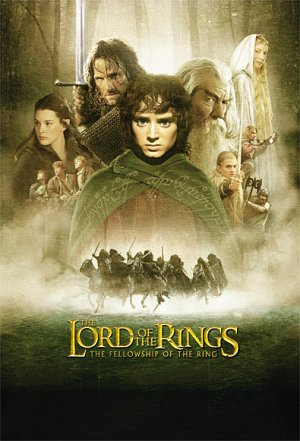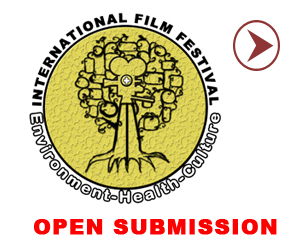 |
The Lord of the
Rings: The Fellowship of the Ring
was the first movie in the Lord of the Rings Trilogy, based on the
popular fantasy books written by J.R. R. Tolkein. The movie was a
blockbuster hit at both the box office and at the Oscars. The story,
in and of itself, is creative, captivating and magical. But even a
wonderful story can flop when put onto the big screen.
Cinematography, special effects, visual effects and the quality of
acting all play an important part in making a story "live" for an
audience. Music also plays a vital part in making a movie
successful. Music can make us feel that we are in another place and
time. It captures our emotions by creating an ambiance of happiness,
sadness, tension, fear or excitement. Music helps suspend our
disbelief about the fantasy of the story. It helps us identify with
distinct characters, places and cultures. The music of The Lord of
the Rings: The Fellowship of the Ring, does all of these things.
Through music, composer Howard Shore
successfully takes us to Middle
Earth.
The Lord of
the Rings: The Fellowship of the Ring takes us to another time and
place. Howard Shore's music tells us that we have left our world
before we've seen even the first frame of the film. As the screen
fades from black into the New Line Cinema icon, we hear music. The
music has an Eastern sound, using woodwind instruments from Africa
and East India. The sound is quaint and mysterious. It gives us the
feeling of being in a far away land and contributes to the
suspension of disbelief that helps the audience subconsciously
consent to be taken to a place with which they are not familiar.
The mystical music that we hear during the first few moments of the
film is soon joined by a voice � the voice of the Elf queen
Galadriel, of Lothlorien. This music that we hear is the theme of
Lothlorien. Every time that we see or hear of Lothlorien or
Galadriel, we hear a version of this theme.
Peter Jackson, director of The Lord of the Rings: The Fellowship of
the Ring, understood the importance of a musical score in a movie.
He said, "The music score to any film, obviously, is very important
because it guides your emotions when you're watching the film. The
actors can do their job, the director can do (his) job in terms of
creating a certain mood and emotion, but using music is so strong
and evoking of what you should be feeling at any given time." |
Advertisement 332 (300)x250

|
Howard Shore the composer said, "Tolkien spent fourteen years
writing The Lord of the Rings. And now you're writing a musical
image, creating a musical mirror, if you will, to his writing. And I
mention this so often - even in other discussions - and I feel like
Frodo. I did feel like that. Like I have this amazing journey to
take, and I had the ring in my vest pocket and 'You were chosen, now
you're going to write the music to Lord of the Rings. And, you have
to do it."
Peter Jackson added this regarding the huge task that Howard Shore
had in composing the music for the The Lord of the Rings: The
Fellowship of the Ring, "It's doing two jobs at once. It's
underscoring the film. It's providing an emotional link - a bridge
between the movie and the audience - and it's drawing the audience
in. But it's doing it in such a way that it's also telling you a lot
about the cultures of this world."
Therefore, every major place, race and character in this movie has a
musical theme attached to it. This film has a large number of
characters, cultures and races. The distinct races, geography,
trees, nature, and the earth itself were a big part of Tolkein's
story. It would have been very easy for the audience to become
confused trying to distinguish between the many peoples and places
of Middle Earth. Giving each of these elements a musical theme makes
them live as individual characters, all contributing to the essence
of Middle Earth. |
The Shire, for example, is the place where the Hobbits live. The
Hobbits are a peaceful people and they live a quiet life. Any sort
of adventure is a scandal. They are an agrarian society and live as
part of the land. Even their homes are burrows in the ground. Howard
Shore uses music to "describe" Hobbits and the Shire to the
audience. Their theme is very light and cheerful. A slide flute
accompanied by a full orchestra give a Celtic or Irish feel. This
accomplishes the feeling of another time, but brings the audience a
little closer to home and gives a feeling of comfort. A solo violin
carries the melody for a while until the full string section
finishes the theme, but whenever the Shire is mentioned or referred
to in the movie the score refers us back to the slide flute.
The Fellowship, made up of people and creatures from different
races, has its own distinct theme. "As the two Hobbits leave
Hobbiton and set out on their own, you hear the first statement of
the Fellowship theme in the corn field, because it's essentially the
first time that the Fellowship is formed," said Mr. Shore.
When the four Hobbits are on their way to the village of Bree,
they are running from the "Nasgul", or Ring Wraiths. There is very
little dialogue during this scene. Our emotions are heightened and
we feel the tension of the moment through the musical score. This is
accomplished largely through dissonance. Our ears like to hear nice
chords. Notes that are close to each other in value sound terrible
to us. In the theme of the Ring Wraiths, the chords that clash are
used to make us to feel uncomfortable. The movie makers want us to
squirm in our seats. They want us to feel fear. The French horns are
playing staccato quarter and eighth notes in a building rhythm while
the strings are on descending eighth notes that continually clash.
Add a men's choir chanting an Elvish poem and it makes for a very
confusing and intense moment.
Then while in the village of Bree, the Hobbits think that they are
finally safe. We see images of them sleeping in their beds smiling.
The scene then cuts to the Ring Wraiths coming into the village. The
dissonant music becomes louder. Cut to the inn keeper's face in
horror as the Wraiths enter his inn. Cut to the peaceful Hobbits in
their beds. All the while, dissonant and ancient sounding music is
playing loudly. Then silence. As the Wraiths approach the Hobbits in
their beds there is silence. This adds to the tension. We hold our
breaths. This is a stroke of genius. Knowing when to not have music,
or score, is just as important as knowing when to include it.
As soon as the Wraiths discover that they were tricked, however, the
angry dissonant Wraith theme returns with a fury to remind us how
serious the situation is. Even though the Hobbits are safe for the
moment, they will never really be secure or free until they have
accomplished their goal. The music reinforces this to the audience,
as a version of the Wraith theme plays softer while Frodo watches
the Wraiths from across the street from the Inn.
The Ring itself has an interesting theme. The Ring, though an
inanimate object, is a character of its own. Its essence is evil and
its intent is to deceive and enslave. The theme of the Ring portrays
all of that through instrumentation and dissonance. It is
appropriate that the main instrument used for the theme of the Ring
is the oboe. The oboe is the instrument used to charm a snake out of
a basket. It is also often associated with seduction, or allure. The
ring certainly personifies that. Frodo, Bilbo, Gollum and many
others were seduced, even addicted, to the Ring.
The wizard, Gandalf, goes to visit his superior and mentor, Sauraman,
at the tower of Isengard. We believe at first that Sauraman is still
a friend to Gandalf.
Once the story reveals that Sauraman has turned to the side of
darkness, the musical theme, as well, "tells" us that the tower of
Isengard is a place of evil. Howard Shore uses several methods to
give that feeling. Dissonance is used to portray a feeling of
uneasiness or apprehension.
Also, during the musical theme for the Tower of Isengard, Howard
Shore uses an odd way of timing so that we feel off balance. Anytime
that we see the tower of Isengard and the forging of weapons, Mr.
Shore adds a beat to throw us off and make us feel uncomfortable. We
are used to hearing music in common time (or four-four time), with
four beats to each measure, and that feels right to us. The
industrial sounding theme uses a five-four time which makes us
uncomfortable by adding an extra beat to each measure. Also, French
horns are used for the main melody, but Howard Shore also relies on
the bass drum, tympani and a chime or bell to give the effect of a
hammer pounding away down in the depths of the caverns underneath
the tower.
Rivendell, a city of the Elves, has a theme of its own. This is a
western haven for the Elves. We feel the peace and the beauty of the
city, as well as its antiquity, through the music. This is quite
different from the theme of Lothlorien. We are made to feel
comfortable here at this place.
When the Fellowship leaves Rivendell and sets out on its journey,
the theme of the Fellowship is fully revealed. The theme is
naturally lyrical, aimed at the brass, but is restrained by a fully
mixed and realized string section. The music is heroic and we feel
the importance of their quest. We are excited and proud of them for
making the decision to destroy the Ring and save Middle Earth.
Later, the Fellowship takes refuge in the Mines of Moria, only to
discover that they are trapped inside a Dwarf "tomb". The theme
music of the Mines of Moria features a men's chorus made up of
Polynesian men. Peter Jackson had this to say about the music for
the mines of Moria. "We sat around our kitchen table at home talking
about the choral arrangement ideas for Moria and I thought it would
be really great to weight it fairly heavily toward Polynesian
singers. Maury or Pacific Islanders who have again, another worldly
quality to their voice."
"Mines being a Dwarven kingdom would really suit having those male
voices. A bit like a Welch mining choir. So, Howard found himself in
the town hall with an all-Polynesian male choir."
At the bridge of Khaza-Dhum, the Fellowship is chased by the Moria
Orcs. The Polynesian men's choir and the tympani drums heighten the
tension and excitement of the scene. The members of the Fellowship
cross the bridge, but Gandalf stays behind to fight the Balrog. The
music crescendos to an all-time forte until Gandalf falls from the
bridge. Then very suddenly, the music goes into a very soft and
melodic hum with just a single boy singing, lamenting for Gandalf.
Under this beautiful theme, the camera shows a montage of the
members of the Fellowship reacting to the loss of Gandalf. We see
the characters faces and expressions of grief, but it is the music
that makes us feel with them. The music "guides" our emotions and we
feel as they do.
Later, when the Fellowship enters the forest of Lothlorien, we again
hear the theme that was introduced at the beginning of the movie.
There is also a twist of tension and mystery to this theme. As the
Fellowship creeps through the forest, we sense through the music
that they are wary of being in this land of the Elves. We sense that
they fear that they will not be welcome.
In Lothlorien, when Boromir speaks of his home in Gondor, we hear a
very brief part of the theme of Gondor, offered by a solo French
horn, foreshadowing a people that we have not yet seen. The full
theme of Gondor, however, is not revealed until the third part of
the trilogy.
Critics of the music in The Lord of the Rings: The Fellowship of the
Ring say that there is just too much music. This simply is not true.
This film was successful largely because of the comprehensive score.
The extensive music in this film augments what is happening on the
screen and enhances the experience for the audience. At every
important moment in this film, the music is there to "guide" the
audience emotionally. The music also helpes suspend our disbelief in
a world that might otherwise seem ridiculous and surreal.
This film has an extensive number of characters, places, cultures
and races. It would have been very easy for the audience to become
confused. Howard Shore uses music to help the audience distinguish
between the different groups and places by giving them their own
distinctive themes.
Through the musical score, we know what to feel. We feel fear when
the Hobbits are on their way to Bree. We feel sadness when Gandalf
falls. We feel tension when Arwen is trying to get Frodo to
Rivendell. We celebrate when the Fellowship sets out on their
incredible journey. We understand the emotions of the characters and
we feel with them. We become part of Middle Earth. And the musical
score of The Lord of the Rings: The Fellowship of the Ring helps
take us there. |



